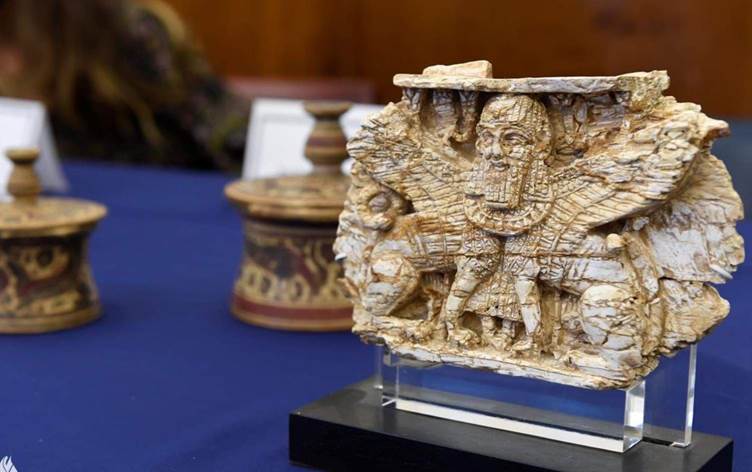Culture Ministry: Iraq has antiquities in more than 5 countries

Iraqi artifacts returned to the Iraqi embassy in the United States. The Iraqi News Agency image.
Baghdad (IraqiNews.com) – The Iraqi Ministry of Culture, Tourism and Antiquities stated on Saturday that Iraq has artifacts in several countries but recovering them is difficult due to the laws of these countries, according to Sada Al-Balad news.
“Iraq recovered artifacts from a museum in Lebanon after sending a team of experts to verify that the pieces belong to the Iraqi heritage,” spokesperson of the Ministry of Culture, Tourism and Antiquities, Ahmed al-Alyawi, said.
“Efforts and negotiations are ongoing with countries that have Iraqi artifacts to recover them. These countries are probably more than five or six countries,” Alyawi explained.
The Iraqi Ministry of Culture is working hard in coordination with the Ministry of Foreign Affairs to recover thousands of artifacts.
“The main problem is some countries have laws that allow selling and moving artifacts from one place to another,” Alyawi clarified.
Archaeological sites across Iraq witnessed destruction, theft and negligence during the wars the country went through in the past years, especially in the period that followed the invasion of the international coalition led by the United States to topple Saddam Hussein’s regime in 2003.
Around 15 thousand artifacts were stolen from Baghdad Museum alone, in addition to approximately 32 thousand artifacts stolen from archaeological sites in Iraq after the American invasion.
The Iraqi Ministry of Foreign Affairs announced in January 2022 that Baghdad recovered five precious artifacts from the United States. The step came as part of the efforts exerted by Iraqi concerned officials to recover artifacts smuggled during the past 30 years.
The recovered pieces are worth hundreds of thousands of dollars, and they include an ivory plaque dated (800-701 B.C.), depicting a human-headed winged sphinx which was used to decorate the royal furniture during the period of King Sagron I (725-721 B.C.) in Nimrud.
Nimrud was a city in northern Iraq dating back to the Neo-Assyrian period (911-612 B.C.).
